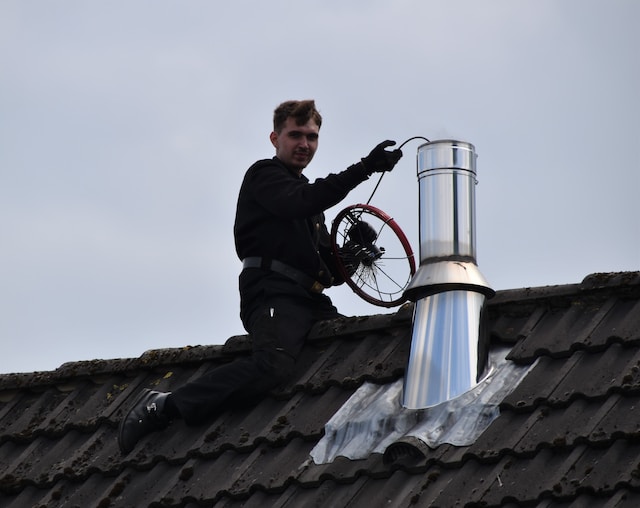Back to Blogs
Unveiling the Stages of Creosote: A Comprehensive Guide to Understanding and Managing Chimney Buildup
August 9, 2023

As the heart of your home crackles with warmth, your chimney silently accumulates a potential threat – creosote. This dark, sticky substance is a natural byproduct of wood combustion and can pose serious risks if left unchecked. In this informative article, we delve into the stages of creosote buildup, exploring its characteristics, implications, and strategies for effective management to ensure a safe and efficient fireplace experience.
Stage 1: Stage of Sooty Buildup
The initial stage of creosote buildup is marked by the presence of sooty particles. These particles, released during incomplete combustion, adhere to the chimney’s inner walls, forming a black, powdery layer. At this point, the buildup may seem harmless, but it’s a precursor to more problematic stages.
Implications: While sooty buildup may not immediately impede the chimney’s functionality, it serves as an indicator of incomplete combustion, reducing energy efficiency and increasing the risk of carbon monoxide emissions.
Stage 2: Stage of Flaky Creosote
With continued wood burning, the sooty layer transforms into flaky creosote. This stage is characterized by the appearance of flaky, tar-like deposits. Flaky creosote is still relatively easy to remove but requires attention to prevent further buildup.
Implications: Flaky creosote buildup restricts proper airflow and insulation, potentially leading to decreased fireplace efficiency and increased fuel consumption.
Stage 3: Stage of Glazed Creosote
As wood is burned over an extended period, the creosote deposits become more concentrated and dense, leading to the formation of glazed creosote. This stage is marked by a shiny, hardened layer that clings tightly to the chimney’s interior.
Implications: Glazed creosote is highly combustible and poses a significant fire hazard. Its hard, dense nature makes removal challenging, necessitating professional intervention to avoid chimney fires.
Managing Creosote Buildup
Regular Inspections: Schedule annual chimney inspections by certified professionals to detect creosote buildup early and ensure timely cleaning.
Proper Wood Burning: Opt for seasoned hardwoods that produce less creosote, and maintain a consistent and hot fire to promote complete combustion.
Controlled Airflow: Adequate air supply promotes efficient combustion, reducing the likelihood of creosote formation.
Creosote Removal: Hire experienced chimney sweeps for thorough creosote removal, especially for glazed creosote, to eliminate fire risks.
Creosote buildup is a natural consequence of enjoying the cozy warmth of a fireplace, but it demands vigilance and proper maintenance to ensure your safety and preserve your chimney’s efficiency. By understanding the stages of creosote and implementing preventive measures, you can continue to relish the comfort of your home while minimizing the risks associated with chimney buildup. Remember, a well-maintained chimney not only enhances your fireplace experience but also guarantees the safety of your household.
Unlock the full potential of your fireplace experience with Spring Hill Chimney Service! Our dedicated team is ready to provide you with top-tier, quality service that ensures the safety and efficiency of your chimney. Say goodbye to creosote buildup and its associated risks, as our experts specialize in thorough creosote removal. Don’t wait until the problem escalates – book your schedule today and let us elevate your home’s comfort and safety to new heights!
